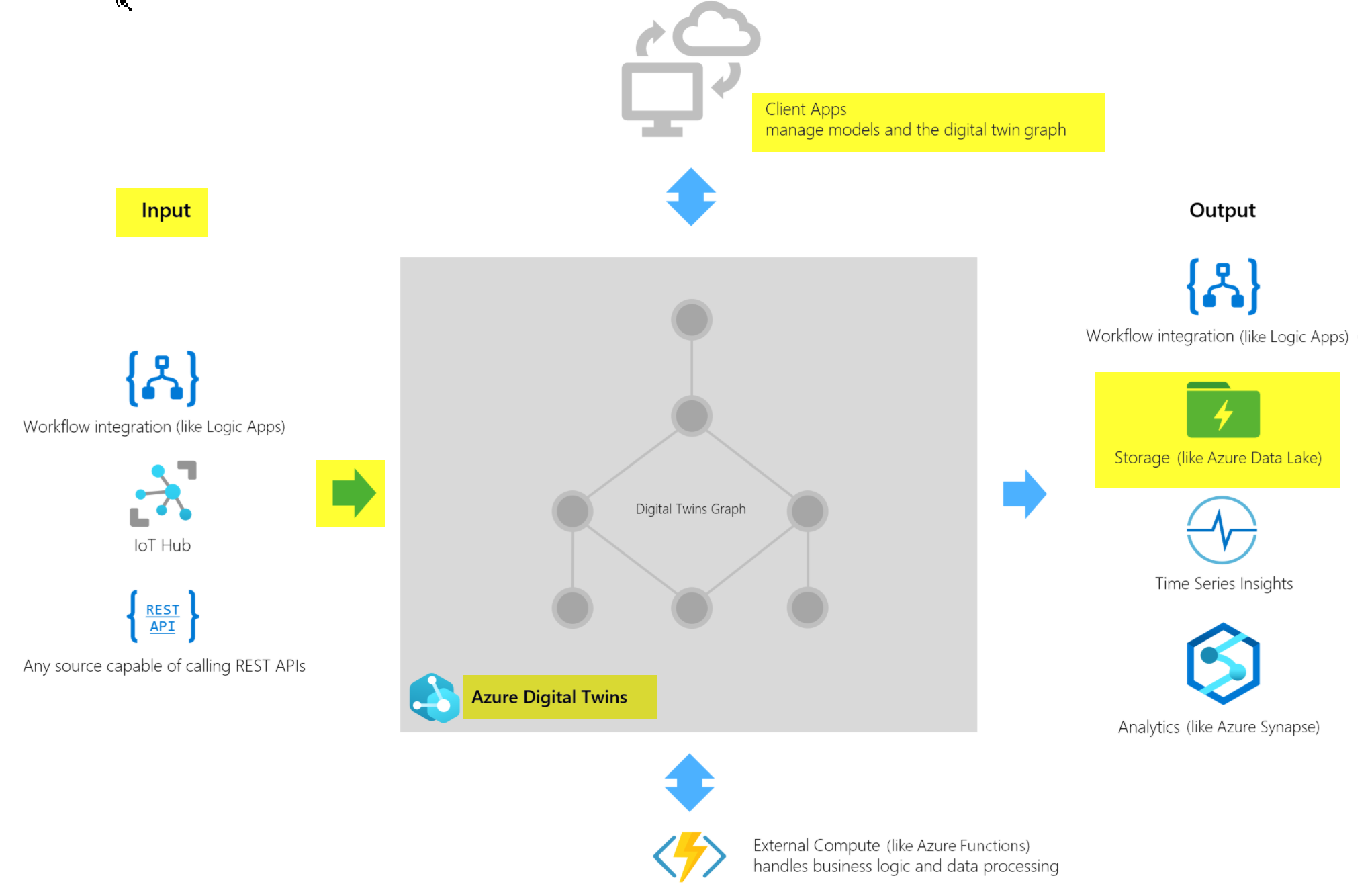Hello @Johan Erasmus , This is a great question!
Instead of comparing how it is better, let us discuss where it will be the best fit, each of these services has its uniqueness in the industry depending on our use case scenario, We can even combine them to harness their benefits.
The below image gives some light on where Azure Digital Twins fit in the industry. The below image has almost all the steps which you have mentioned like starting from Event generation -->routing-->storing-->Powerbi on Client Application

One of the benefits of Azure Digital Twins is as below.Ref
- Output to Azure Time Series Insights, storage, and analytics
The data in your Azure Digital Twins model can be routed to downstream Azure services for additional analytics or storage. This is provided through event routes, which use Event Hub, Event Grid, or Service Bus to drive your desired data flows.
Some things you can do with event routes include:
- Storing Azure Digital Twins data in Azure Data Lake
- Analyzing Azure Digital Twins data with Azure Synapse Analytics, or other Microsoft data analytics tools
- Integrating larger workflows with Logic Apps
- Connecting Azure Digital Twins to Time Series Insights to track time series history of each twin
- Aligning a Time Series Model in Time Series Insights with a source in Azure Digital Twins
This is another way that Azure Digital Twins can connect into a larger solution, and support your custom needs for continued work with these insights.
Combined, these capabilities greatly simplify today’s difficult tasks of modeling and creating a digital representation of an environment, helping you focus on what differentiates your business rather than building and operating complex, distributed systems architecture securely and at scale.
To learn more about the customers and partners using Azure Digital Twins in exciting ways, we encourage you to visit the customer stories covering a spectrum of industry use cases.
Some of the examples to inspire you further are:
Digital Twins for Mining
au.insight.com, Below is the borrowed quote from this site.
By leveraging Microsoft Azure Digital Twin for the gathering and storing of data, spatial intelligence graphs can be created that model the relationships and interactions between your people, spaces and devices at your mine sites.
Please comment in the below section if you need further help in this matter.